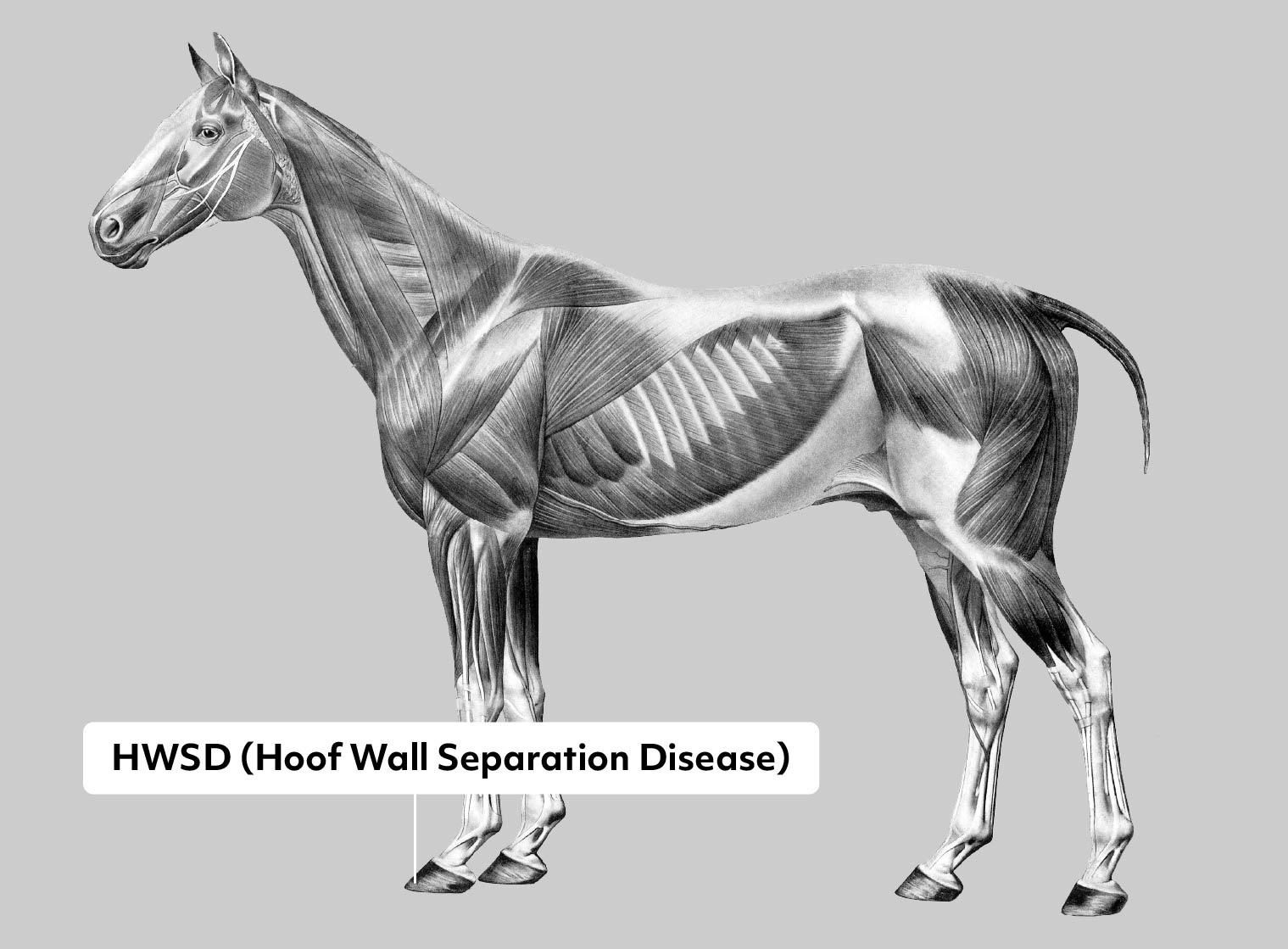Hoof Wall Separation Disease (HWSD)
Gene or Region: SERPINB11
Reference Variant: -
Mutant Variant: C
Affected Breeds: Connemara
Research Confidence: High Confidence - Strong association and functional data in studied population
Explanation of Results: hwsd/hwsd = homozygous for Hoof Wall Separation Disease, trait expressed hwsd/n = heterozygous for Hoof Wall Separation Disease, carrier n/n = no variant detected
Hoof Wall Separation Disease: Genetic Causes, Diagnosis, and Treatment in Horses
Hoof Wall Separation Disease is characterized by separation and breakage of the dorsal hoof wall extending up from the sole. Affected ponies begin showing symptoms at less than 6 months of age, and often develop chronic laminitis. Frequent hoof trimming and glue on shoes can help manage the condition. Hoof wall separation disease is an autosomal recessive disorder, thus a pony must inherit two copies (HWSD/HWSD) to show symptoms. Ponies with only one allele (HWSD/n) are known as carriers due to their ability to produce affected offspring.
Gene Information
SERPINB11 is a serine protease inhibitor of unknown function. In normal horses, it is highly expressed in the corony band. However, the insertion associated with HWSD results in a premature stop codon, resulting in an incomplete protein and greatly decreased expression.
References
Finno CJ et al., “SERPINB11 frameshift variant associated with novel hoof specific phenotype in Connemara ponies.” (2015) PLoS Genet. 11: e1005122. PMID: 25875171
More Horse Health
"Warmblood" Fragile Foal Syndrome
"Warmblood" fragile foal syndrome (FFS) is a connective tissue disorder resulting in joint laxity and extremely thin skin that is only loosely connected to the body. The skin is easily torn, resulting in lacerations, hematomas, and seromas across the foal. Affected foals are euthanized shortly after birth.
Androgen Insensitivity Syndrome
Androgen Insensitivity Syndrome (AIS) is an X-linked disorder of sexual development resulting in a female horse with XY chromosomes. Horses with AIS exhibit stallion-like behavior such as agression toward other horses, Flehman response and vocalization toward cycling mares.
Cerebellar Abiotrophy
Cerebellar Abiotrophy (CA) is a degenerative neurological disorder, due to the death of neurons in the brain. Symptoms (head tremors, lack of coordination, wide stances, exaggerated gain, difficulty rising and startling easily), typically appear in foals between six weeks and four months of age.
Chronic Idiopathic Anhidrosis Risk
Chronic Idiopathic Anhidrosis Risk (CIA) is the inability to sweat in response to increased body temperature, (AKA "non-sweater"). This condition is dangerous and sometimes life-threatening for horses, who rely on sweating for 65-70% of their temperature regulation.
